Liquid Jet & Two-Phase Nozzle Flow
| Liquid jets have been studied for applications arising from two distinct industries. The first application targets an efficient atomization and the second searches for an efficient energy transfer via high-speed collimated liquid jets. The latter has been the focus of our study in this field. Motivated by its applications in the hydroentangling process (a process by which a nonwoven fabric can be produced from a loosely bonded web of fibers), we studied the impact of nozzle geometry on the breakup length of the resulting jets. |
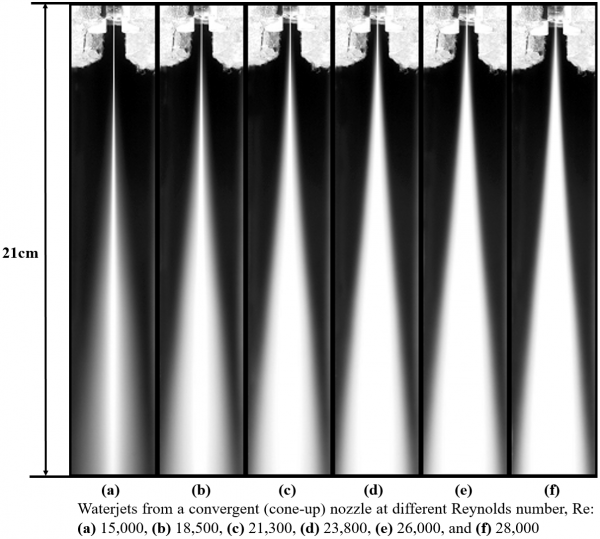 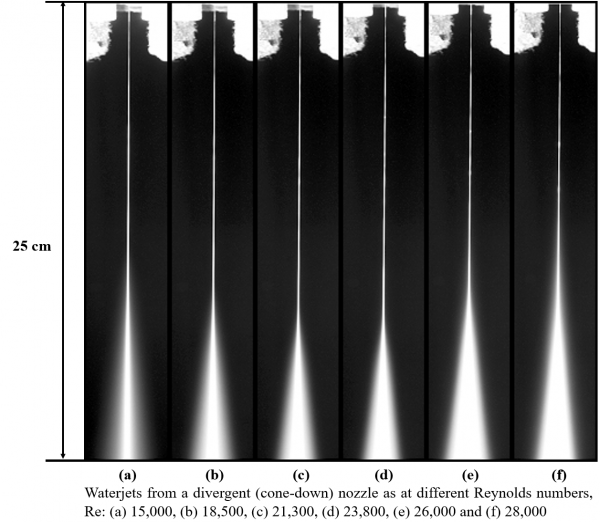 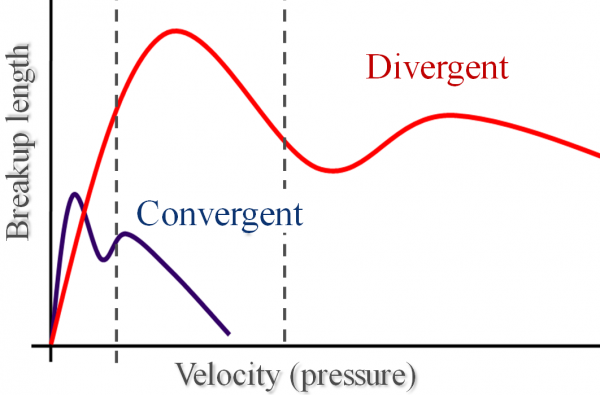 The jet images in the figure to the left show waterjets issued from a convergent nozzle, with inlet and outlet diameters of 350 µm and 120 µm, respectively, and a length of 1 mm, at different Reynolds numbers. The jet images in the middle figure show the same results but when the nozzle was inverted (used as a divergent nozzle). Surprisingly, a much longer breakup length can be seen from the jets issued from the divergent nozzle [Begenir et al. 2004]. This effect is schematically shown in the figure to the right. |
| Our numerical simulations revealed that sharp-corner divergent nozzles (like the one used in the above experiment) promote flow detachment. The waterjet resulted from a detached nozzle flow is enveloped by a layer of downstream air is therefore protected against wall-induced instabilities (the main cause of jet breakup). Such constricted waterjets tend to remain intact as can be seen in the above experimental images. The waterjets issued from the convergent nozzle tend to atomize fairly quickly due to extensive cavitation and other wall-induced instabilities. |
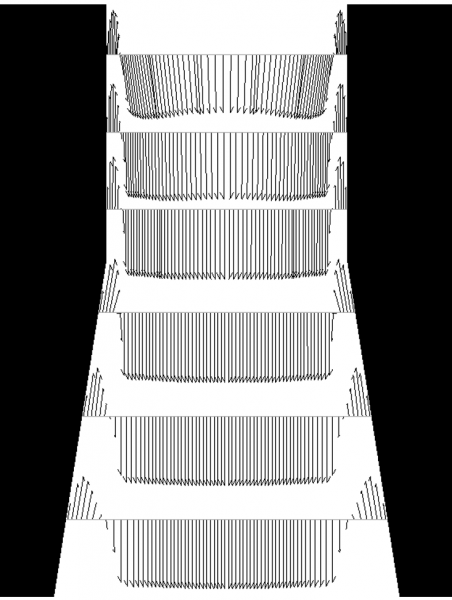 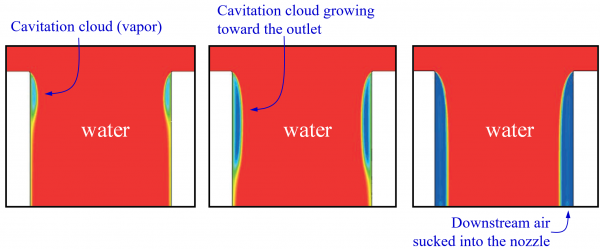 The vector plot figure shows the velocity field inside a divergent nozzle. The downward and upward vectors show water and air, respectively. The colorful contour plots show the mixture density (red to blue represent density varying from 1000 to 1 kg/m^3) [Tafreshi and Pourdeyhimi 2004]. Video 1: Effects of Nozzle Cavitation on Waterjet StabilityVideo 2: Nozzle Cavitation Resulting in a Hydraulic Flip Producing a Constricted Waterjet |
| Waterjet breakup is traditionally considered to follow the Ohnesorge classification. In this classification, high-Reynolds number waterjets are expected to atomize quickly after discharge. Our computational-experimental studies revealed, for the first time, that a constricted waterjet (i.e., a waterjet resulted from a detached flow), does not follow the Ohnesorge classification. This means that flow detachment inside the nozzle can move the jet-to-spray transition point further downstream of the nozzle or to higher pressures. |
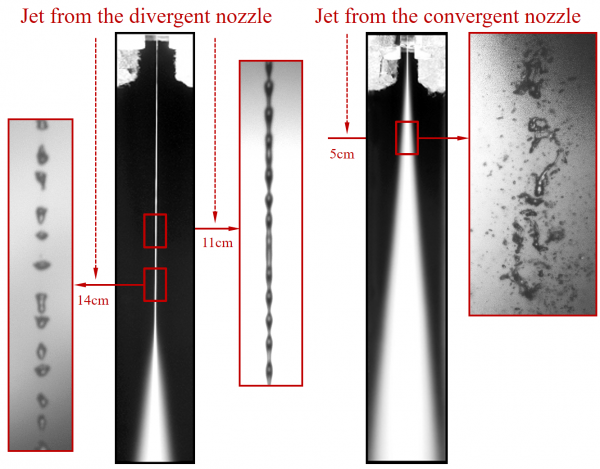 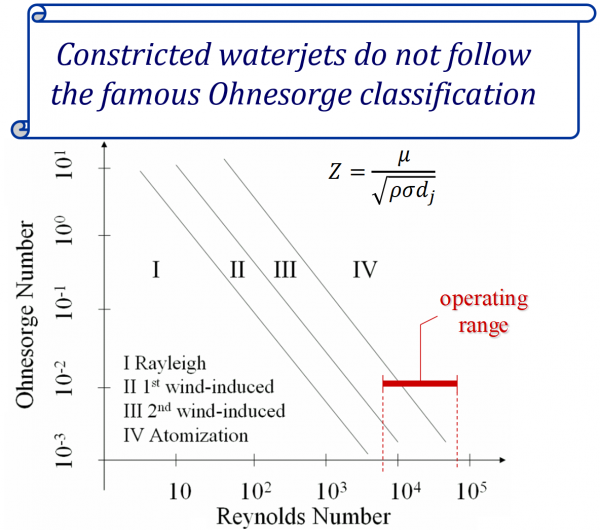 A constricted waterjet issued from a divergent nozzle (the jet to the left) is compared to its atomizing counterpart issued from the same nozzle when inverted (the jet to the right) at a Reynolds number of about 30,000. High-speed images are added tp better illustrate the wind-induced and atomizing structures of these jets. The above constricted jet is the 2nd wind-induced regime, in contrast to the predictions of the well-known classification of Ohnesorge, expecting an atomizing jet at such a high Reynolds number [Tafreshi and Pourdeyhimi 2003]. |
Representative Publications:
|
Acknowledgement:
|
